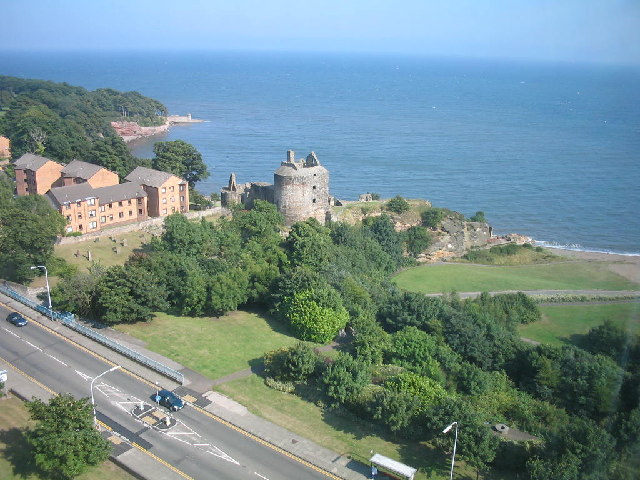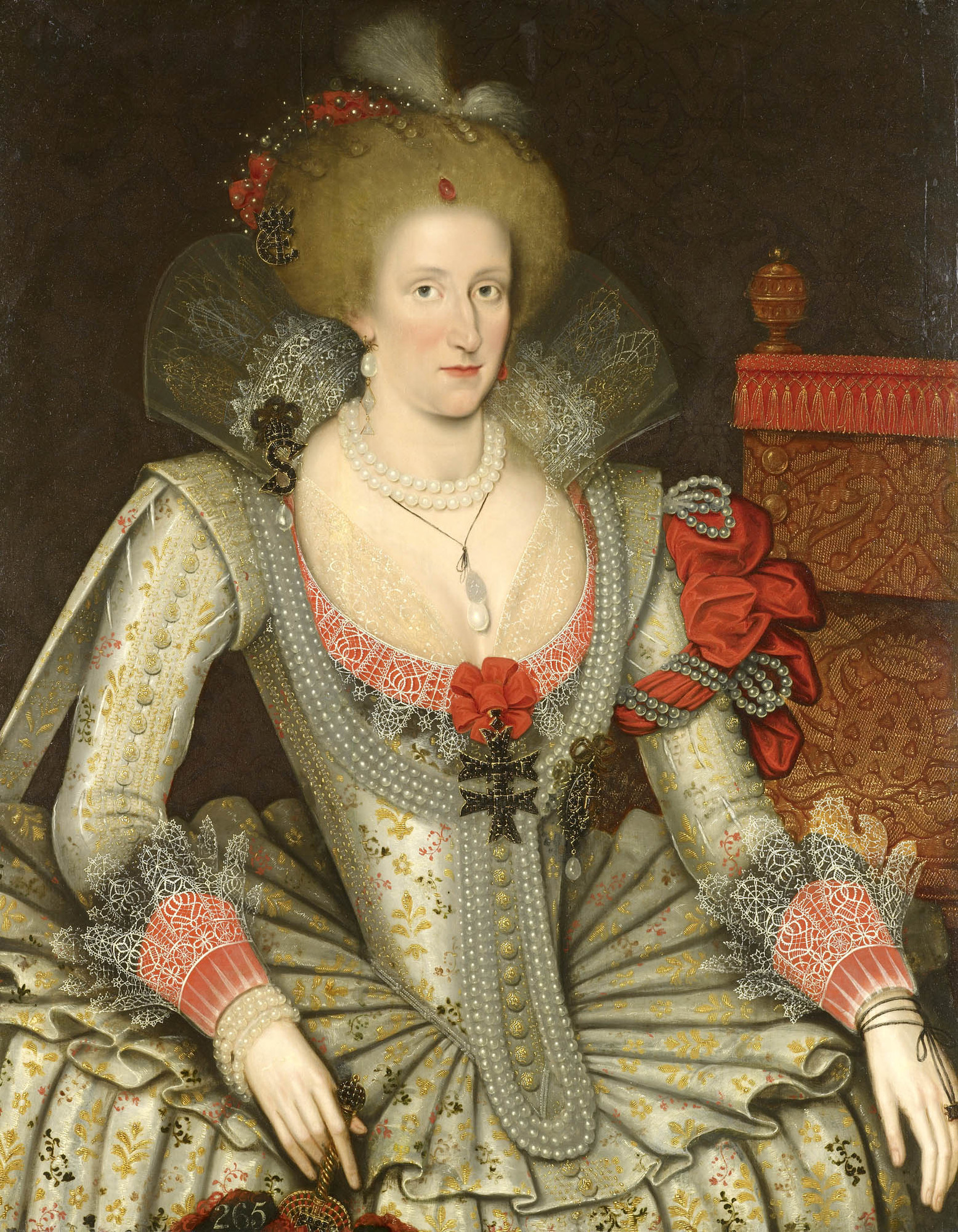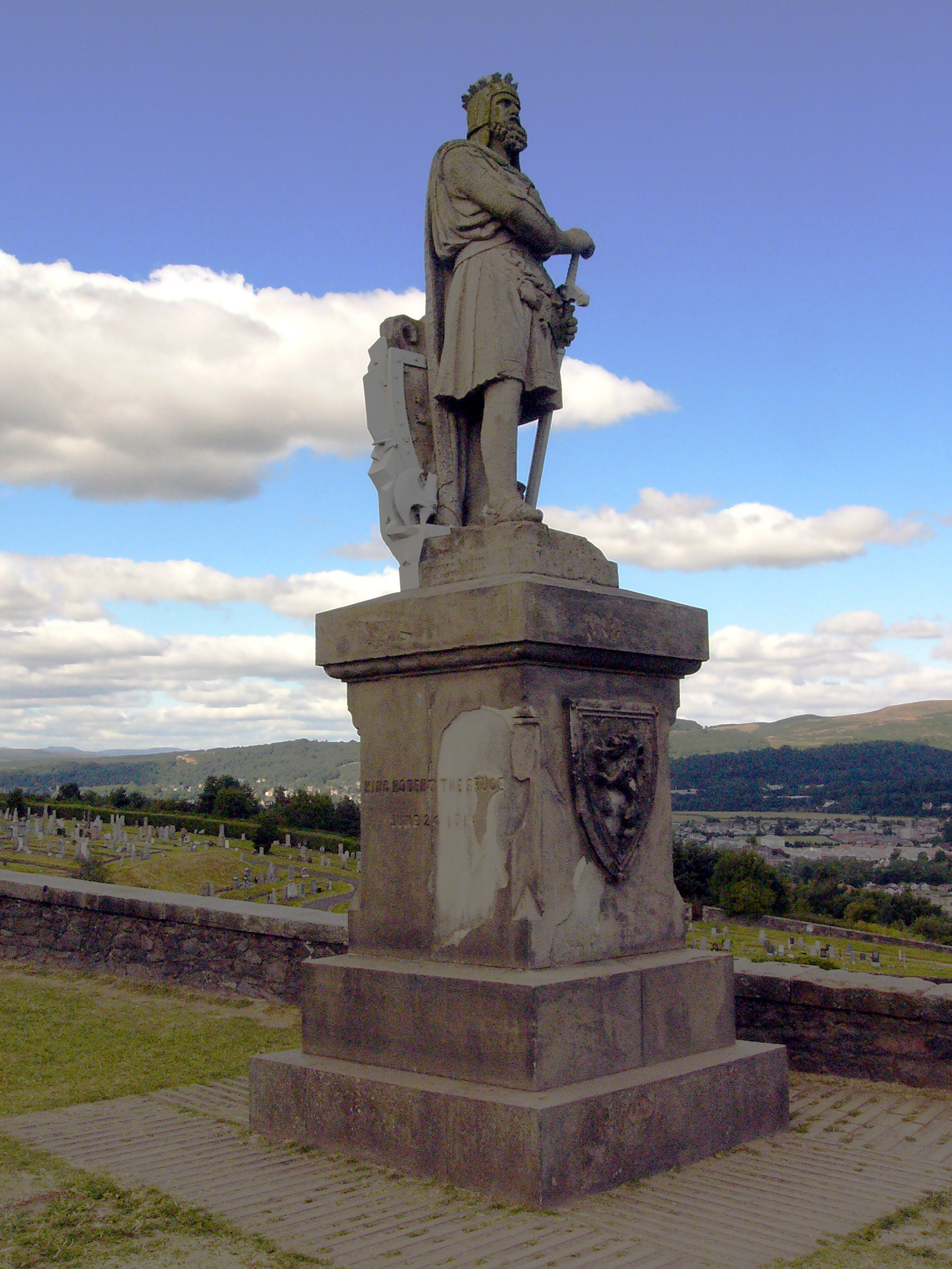|
Andrew Sinclair (privy Counsellor)
Sir Andrew Sinclair of Ravenscraig Castle, Ravenscraig, in Denmark known as Anders Sincklar (Sinklar, Sinclar), til Ravenscraig og Sinclairsholm Castle, Sincklarsholm, born 1555, died 1625, was a Scotsman of noble birth, who became a Danish privy counsellor, envoy to England, colonel, and holder of extensive fiefs. Early life Sinclair was the third son of Henry Sinclair, 6th Lord Sinclair, and Janet Lindsay, in his fathers first marriage. Retrieved 2016-12-11. For a period he was brought up at the court of Henry I, Duke of Guise. In September 1589 James VI of Scotland was waiting for the arrival of his bride Anne of Denmark. On the 10 October 1589 the Danish envoy Steen Bille and Andrew Sinclair arrived in Leith with her letters. She had decided to stay over-winter in Norway. In October 1589 Sinclair sailed back to Norway with James VI to meet Anne of Denmark. He went ahead from Flekkerøy with Steen Bille to Anne at Oslo with news of their arrival. A Danish source mentions he ... [...More Info...] [...Related Items...] OR: [Wikipedia] [Google] [Baidu] |
Ravenscraig Castle
Ravenscraig Castle is a ruined castle located in Kirkcaldy which dates from around 1460. The castle is an early example of artillery defence in Scotland. History The construction of Ravenscraig Castle by the mason Henry Merlion and the master carpenter Friar Andres Lesouris was ordered by King James II of Scotland, James II (reigned 1437–1460) as a home for his wife, Mary of Guelders.Eunson, Eric ''Old Dysart and East Kirkcaldy'' p.27. The castle is considered one of the first - perhaps the very first - in Scotland to be built to withstand cannon fire and provide for artillery defence. The king was involved with the planning but, ironically, was killed in a tragic accident with a loaded cannon at the Capture of Roxburgh (1460), Siege of Roxburgh Castle near Floors Castle in the Scottish Borders.Lamont-Brown ''Fife in History and Legend'' pp145–146 Construction was commenced around 1460 by his widow, Mary of Guelders, as a memorial to him and as a dower house.Lamont-Brown ... [...More Info...] [...Related Items...] OR: [Wikipedia] [Google] [Baidu] |
Anne Of Denmark
Anne of Denmark (; 12 December 1574 – 2 March 1619) was the wife of King James VI and I. She was List of Scottish royal consorts, Queen of Scotland from their marriage on 20 August 1589 and List of English royal consorts, Queen of England and Ireland from the union of the Scottish and English crowns on 24 March 1603 until Death and funeral of Anne of Denmark, her death in 1619. The second daughter of King Frederick II of Denmark and Sophie of Mecklenburg-Güstrow, Anne married James at age 14. They had three children who survived infancy: Henry Frederick, Prince of Wales, who predeceased his parents; Elizabeth Stuart, Queen of Bohemia, Princess Elizabeth, who became Queen of Bohemia; and James's future successor, Charles I of England, Charles I. Anne demonstrated an independent streak and a willingness to use factional Scottish politics in her conflicts with James over the custody of Prince Henry and his treatment of her friend Barbara Ruthven, Beatrix Ruthven. Anne app ... [...More Info...] [...Related Items...] OR: [Wikipedia] [Google] [Baidu] |
Ulrik Of Denmark (1578–1624)
Prince Ulrik John of Denmark, ( Koldinghus Palace, Kolding, 30 December 1578 – 27 March 1624, Rühn) was a son of King Frederick II of Denmark and his consort, Sophie of Mecklenburg-Güstrow. As the second-born son he bore the merely titular rank of ''Duke of Holstein and Schleswig, Stormarn and Ditmarsh'' and had no share in the royal-ducal condominial rule of Holstein and Schleswig, wielded by the heads of the houses of Oldenburg (royal) and its cadet branch Holstein-Gottorp (ducal). Since 1602 he held the religiously defunct position of '' Bishop of Schleswig'', enjoying the revenues of the implied estates and manor. The year after he succeeded his grandfather as '' Administrator of the Prince-Bishopric of Schwerin'', holding both posts until his death. Education and efforts to provide Ulrik a princely sustenance As a small child his parents sent Ulrik to his maternal grandparents Ulrich, Duke of Mecklenburg and his consort Duchess Elizabeth of Denmark. In 1583 he ... [...More Info...] [...Related Items...] OR: [Wikipedia] [Google] [Baidu] |
Robert Cecil, 1st Earl Of Salisbury
Robert Cecil, 1st Earl of Salisbury, (1 June 156324 May 1612) was an English statesman noted for his direction of the government during the Union of the Crowns, as Tudor England gave way to Stuart period, Stuart rule (1603). Lord Salisbury served as the Secretary of State (England), Secretary of State of England (1596–1612) and Lord High Treasurer (1608–1612), succeeding his William Cecil, 1st Baron Burghley, father as Queen Elizabeth I's Lord Privy Seal and remaining in power during the first nine years of King James VI and I, James I's reign until his own death. The principal discoverer of the Gunpowder Plot of 1605, Robert Cecil remains a controversial historic figure as it is still debated at what point he first learned of the plot and to what extent he acted as an ''agent provocateur''. Early life and family Cecil (created Earl of Salisbury in 1605) was the younger son of William Cecil, 1st Baron Burghley by his second wife, Mildred Cooke, eldest daughter of Sir Anth ... [...More Info...] [...Related Items...] OR: [Wikipedia] [Google] [Baidu] |
Roger Aston
Sir Roger Aston (died 23 May 1612) of Cranford, Middlesex, was an English courtier and favourite of James VI of Scotland. Biography Aston was the illegitimate son of Thomas Aston (died 1553), Thomas Aston (died 1553). Scottish sources spell his name variously as "Aschetone", "Aschetoun", or "Aschingtoun". After serving the Regent Lennox, Earl of Lennox, Henry Stuart, Lord Darnley, Lord Darnley, and Mary, Queen of Scots, Aston was made a Gentleman of the Bedchamber to James VI of Scotland in 1578. In England, he was Master of the Great Wardrobe to King James I in England. He held both positions until his death. From 1595 he was keeper of Linlithgow Palace, and one of his daughters was born at the palace in October 1595. At the Scottish court In May 1580 twenty five gentlemen were appointed as "pensioners to attend the King's Majesty at all times on his riding and passing to the fields". The riding entourage included Aston with, James Stewart, Earl of Arran, Captain James Stewa ... [...More Info...] [...Related Items...] OR: [Wikipedia] [Google] [Baidu] |
John Kinloch (post Master)
John Kinloch or Killoch was keeper of the royal tennis courts, a post master and stable owner in 16th-century Edinburgh and the proprietor of house used for lodgings and banquets near Holyrood Palace. Career John Kinloch was a son or relative of Henry Kinloch, a merchant burgess of the Canongate. Their house gave the former name "Kinloch's Close" to a site more recently known as Brodie's Close at the foot of the Canongate, close to the Palace. The 19th-century historian Daniel Wilson connected the name of another Kinloch's close, further west up the street from the palace, near New Street, to Henry Kinloch and the entertainment of the French ambassador in 1565, which seems a less likely location. Henry Kinloch hosted the French ambassador Nicholas d'Angennes, seigneur de Rambouillet in February 1566. The ambassador was entertained at Holyrood Palace by Mary, Queen of Scots in "maskrie and mumschance" during which her ladies were dressed in men's apparel. The visit caused some sc ... [...More Info...] [...Related Items...] OR: [Wikipedia] [Google] [Baidu] |
Stirling Castle
Stirling Castle, located in Stirling, is one of the largest and most historically and architecturally important castles in Scotland. The castle sits atop an Intrusive rock, intrusive Crag and tail, crag, which forms part of the Stirling Sill geological formation. It is surrounded on three sides by steep cliffs, giving it a strong defensive position. Its strategic location, guarding what was, until the 1890s, the lowest bridging point, farthest downstream crossing of the River Forth, has made it an important fortification in the region from the earliest times. Most of the principal buildings of the castle date from the fifteenth and sixteenth centuries. A few structures remain from the fourteenth century, while the outer defences fronting the town date from the early eighteenth century. Before the union with England, Stirling Castle was also one of the most used of the many Scottish royal residences, very much a palace as well as a fortress. Several List of Scottish monarchs, Sc ... [...More Info...] [...Related Items...] OR: [Wikipedia] [Google] [Baidu] |
Masque At The Baptism Of Prince Henry
A masque was held at the baptism of Henry Frederick, Prince of Wales, Prince Henry on 30 August 1594 at Stirling Castle. It was written by the Scottish poet William Fowler (makar), William Fowler and Patrick Leslie, 1st Lord Lindores. Prince Henry, born 19 February 1594, was the first child of James VI of Scotland and Anne of Denmark. He was heir apparent to the throne of Scotland and potentially in line to the throne of England. William Fowler composed the masque and wrote an account of the celebrations in ''A True Reportarie of the Baptisme of the Prince of Scotland'' (1594) printed in Edinburgh and London. An English spectator also made a report of the events. The programme owed much to Catherine de' Medici's court festivals, French Valois court festival, while some aspects were attuned to please English audiences and readers of Fowler's book. There was a tournament in exotic costume and a masque during which desserts were served, while Latin mottoes were displayed and verses ... [...More Info...] [...Related Items...] OR: [Wikipedia] [Google] [Baidu] |
Anne Catherine Of Brandenburg
Anne Catherine of Brandenburg (26 June 1575 – 8 April 1612) was Queen of Denmark and Norway from 1597 to 1612 as the first spouse of King Christian IV of Denmark. Life Anne Catherine was born in Halle (Saale) and raised in Wolmirstedt. Her parents were Joachim Frederick, Margrave of Brandenburg and his first wife Catherine of Brandenburg-Küstrin. Christian met her on his journey in Germany in 1595 and decided to marry her. In 1596, Anne Catherine and her parents were present at his coronation, and the next year, the marriage was arranged. Her personal motto - which can be seen on top of the gate to the courtyard of Frederiksborg Castle - was: "Rege me Jehova spirito sanctu tuo" ("Guide me, Jehovah, with your holy spirit.") Anne Catherine became Queen of Denmark on 27 November 1597 when she was married to Christian IV. The wedding took place in the castle of Haderslevhus in South Jutland the year after the coronation of Christian IV. She was crowned queen in 1598. She wa ... [...More Info...] [...Related Items...] OR: [Wikipedia] [Google] [Baidu] |
Groom Of The Chamber
Groom of the Chamber was a position in the Household of the monarch in early modern England. Other ''Ancien Régime'' royal establishments in Europe had comparable officers, often with similar titles. In France, the Duchy of Burgundy, and in England while French was still the language of the court, the title was varlet or valet de chambre. In German, Danish and Russian the term was "Kammerjunker" and in Swedish the similar "Kammarjunkare". In England after the Restoration, appointments in the King's Household included Groom of the Great Chamber, Groom of the Privy Chamber and Groom of the Bedchamber. The first two positions were appointed by Lord Chamberlain's warrant; the third, of greater importance, was a Crown appointment. Medieval and early-modern England Traditionally, the English Court was organized into three branches or departments: # the Household, primarily concerned with fiscal more than domestic matters, the "royal purse"; # the Chamber, concerned with the ''Pres ... [...More Info...] [...Related Items...] OR: [Wikipedia] [Google] [Baidu] |
Christian IV Of Denmark
Christian IV (12 April 1577 – 28 February 1648) was King of Denmark and King of Norway, Norway and List of rulers of Schleswig-Holstein, Duke of Holstein and Schleswig from 1588 until his death in 1648. His reign of 59 years and 330 days is the longest in Scandinavian history. A member of the House of Oldenburg, Christian began his personal rule of Denmark-Norway in 1596 at the age of 19. He is remembered as one of the most popular, ambitious, and proactive Danish-Norwegian kings, having initiated many reforms and projects. Christian IV obtained for his kingdoms a level of stability and wealth that was virtually unmatched elsewhere in Europe. He engaged Denmark-Norway in numerous wars, most notably the Thirty Years' War (1618–1648), which devastated much of Germany, undermined the Danish economy, and cost Denmark-Norway some of its conquered territories. He rebuilt and renamed the Norwegian capital Oslo as ''Christiania'' after himself, a name used until 1925. Early years ... [...More Info...] [...Related Items...] OR: [Wikipedia] [Google] [Baidu] |
Valet De Chambre
''Valet de chambre'' (), or ''varlet de chambre'', was a court appointment introduced in the late Middle Ages, common from the 14th century onwards. Royal households had many persons appointed at any time. While some valets simply waited on the patron, or looked after his clothes and other personal needs, itself potentially a powerful and lucrative position, others had more specialized functions. At the most prestigious level it could be akin to a monarch or ruler's personal secretary, as was the case of Anne de Montmorency at the court of Francis I of France.Reginald Blomfield and L. C., "Valet de Chambre," '' The Burlington Magazine for Connoisseurs'', vol. 21, no. 109 (Apr., 1912), p. 55. For noblemen pursuing a career as courtiers, like Étienne de Vesc, it was a common early step on the ladder to higher offices. For some this brought entry into the lucrative court business of asking for favours on behalf of clients, and passing messages to the monarch or lord heading t ... [...More Info...] [...Related Items...] OR: [Wikipedia] [Google] [Baidu] |






